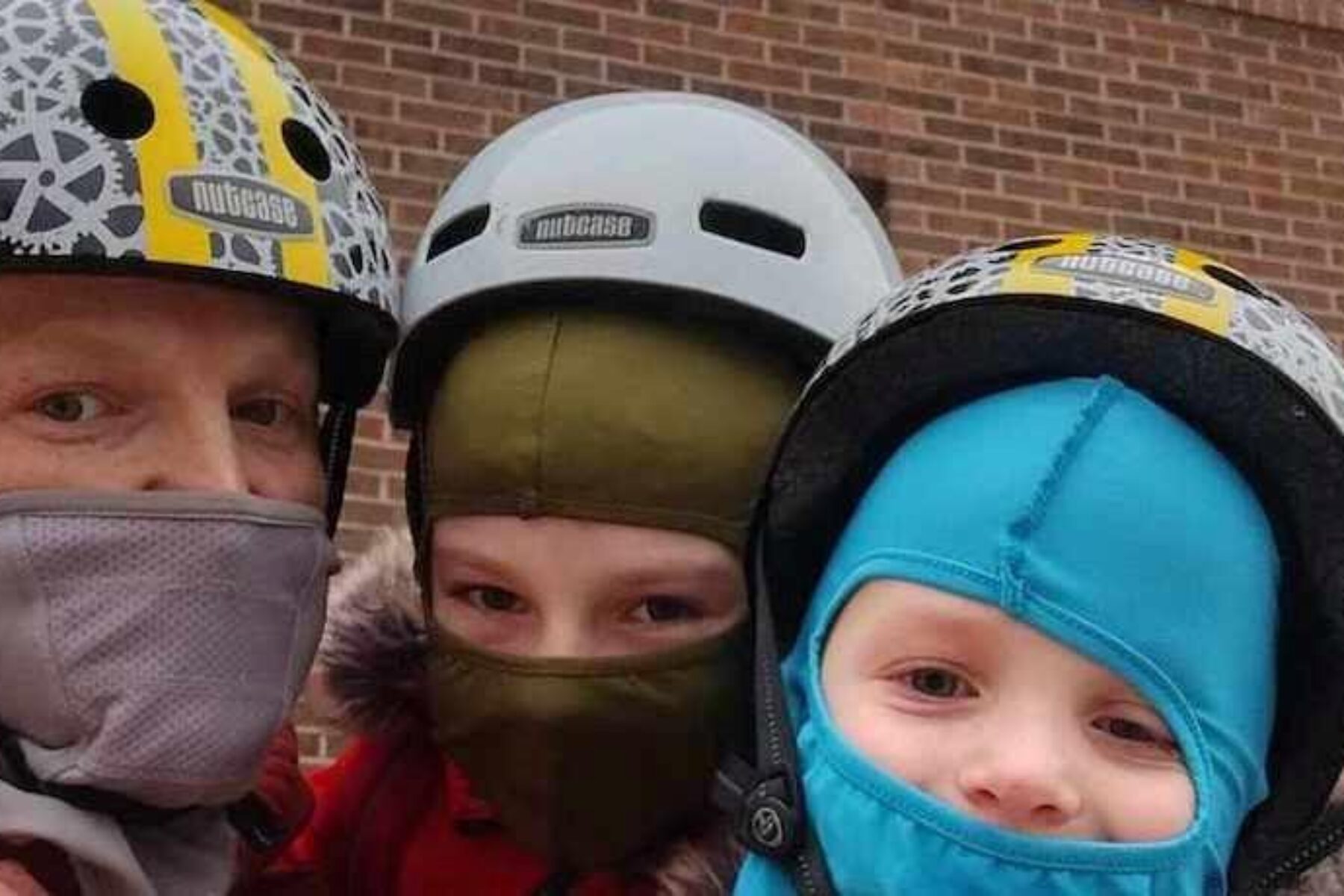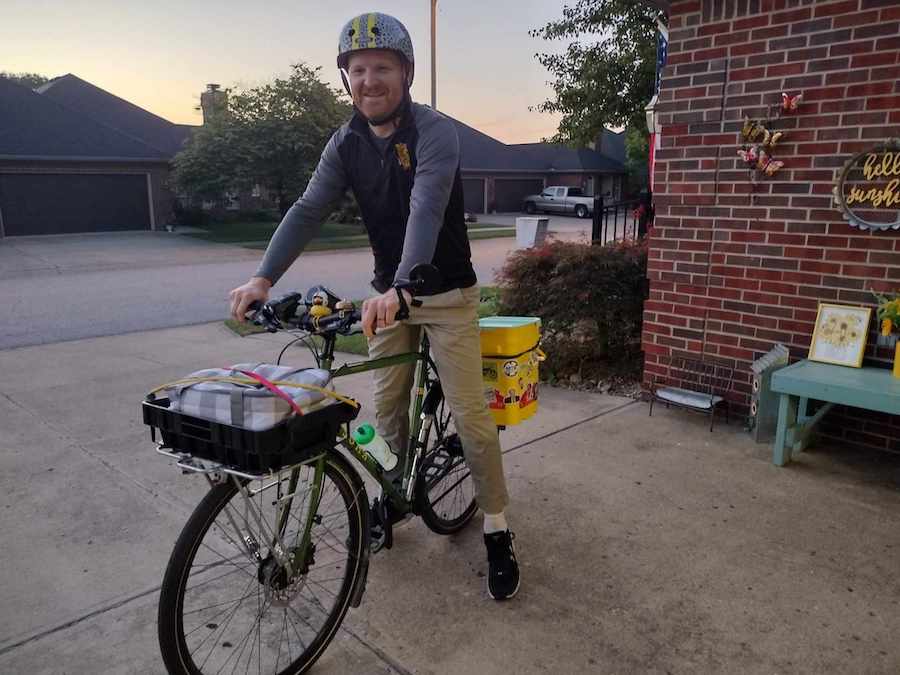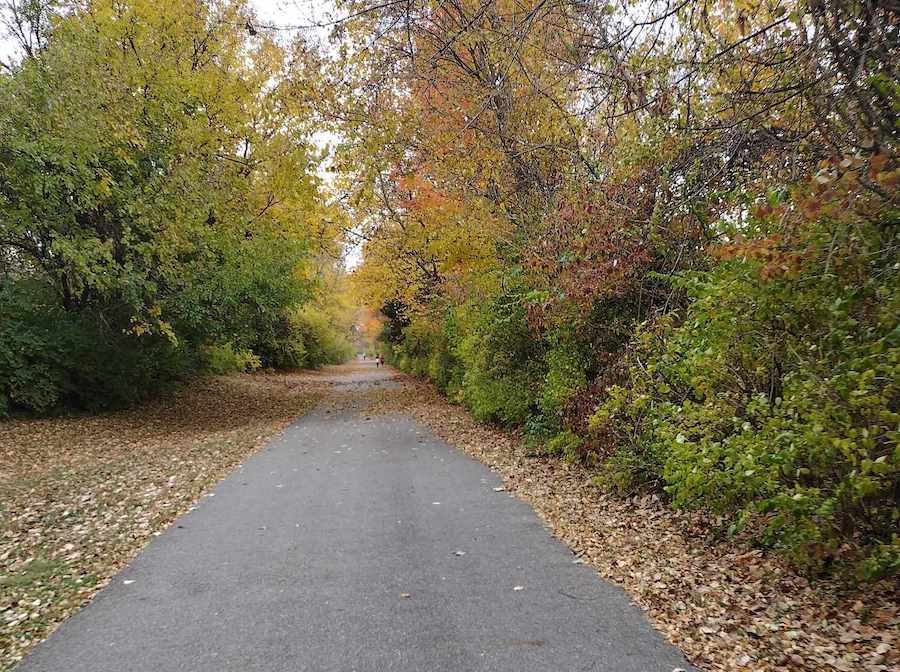Trail Moments | Teacher Shares Bike Commuting Lessons

This article was originally developed for the Fall 2023 issue of Rails to Trails magazine. It has been reposted here in an edited format. Subscribe to read more articles about remarkable rail-trails and trail networks while also supporting our work. Have comments on this article? Email the magazine.
“Hey Mr. Hill. Did you bike to school today?”
I was asked this question on the coldest day of the year in early February by a student at Avon High School, where I teach robotics and pre-engineering. I told him I did and loved every second of my ride. That student—and several others who have expressed wonderment at my choice of transportation—often want to know why I wouldn’t just take a car each morning and afternoon.

I ride for several reasons. First, it gives me an opportunity to mentally prepare for my day as a teacher, and time to unwind from the day and focus on my family at home. Second, I enjoy getting a workout in without having to put in additional time at a gym. Lastly, I do this to be an example to my students to not be afraid to do something different. I live in Plainfield, Indiana (a suburb of Indianapolis), and central Indiana is very automobile focused; I like to have conversations with students about how they can cycle and don’t have to conform to all social norms.
When my wife and I bought our current home, our top priority was having trail access, and we found a home that enables a safe entry to our trail system. We moved to Plainfield to have access to its fantastic system of trails that not only allow for recreation but can serve as an alternative to single-occupancy automobiles. I think rail-trails—like our local favorite, the Vandalia Rail Trail—are the best choices for bike commuting as they are safe, protected and scenic. The only part of my commute that is on roads is the school parking lot.

During the 2021–2022 school year, I was able to become a quasi-full-time bike commuter and was proud to ride 153 times out of the 185 school days. Although this was quite a feat, I wanted to push myself to do more. As a result of some good luck, good weather and support from my family, I biked to school 180 times out of 185 school days this year. On occasion, I’m also able to bike with my kids, aged 7 and 9, to their school on my way to work, which is always a highlight.
Related: Swap Out a Car Trip for a Trail Trip With These Tips and Tricks
“Is that a kitty litter bucket?”
My unique identifier is always having at least one kitty litter bucket as a pannier on my bike. This is a common talking point among various crowds—and the best piece of commuting bike equipment I’ve come across. It’s easy to find, durable and readily replaceable if one does break. In them, I keep my commuting essentials: lunch, rain gear, a lock and a first aid kit. When I need to haul more supplies, I can put up to four on my bike.
My advice to anyone considering bike commuting is to just go for it. Don’t stress about the best equipment or being the fastest. Just ride! Also, set limits for yourself in terms of what you are comfortable with. My two “no gos” are ice and lightning.
That said, there are always reasons to miss days, but be creative and find ways to still ride. For example, last year, I found a way to haul three dozen donuts on my front rack. Be proud of what you are doing. Even if you bike commute just once a week, that is a great accomplishment.
Related: Ohio Students Venture Into the Wild

This summer, we’re challenging everyone, everywhere to make more #TrailMoments! From July 31 through Sept. 30, share your favorite Trail Moments with us—whether you’re spending time on the trail commuting, exercising and practicing wellness, connecting with loved ones, exploring the community, volunteering or being in nature. Show us how you’re using the trails by submitting a photo, video and/or your written story using our online form.

Donate
Everyone deserves access to safe ways to walk, bike, and be active outdoors.